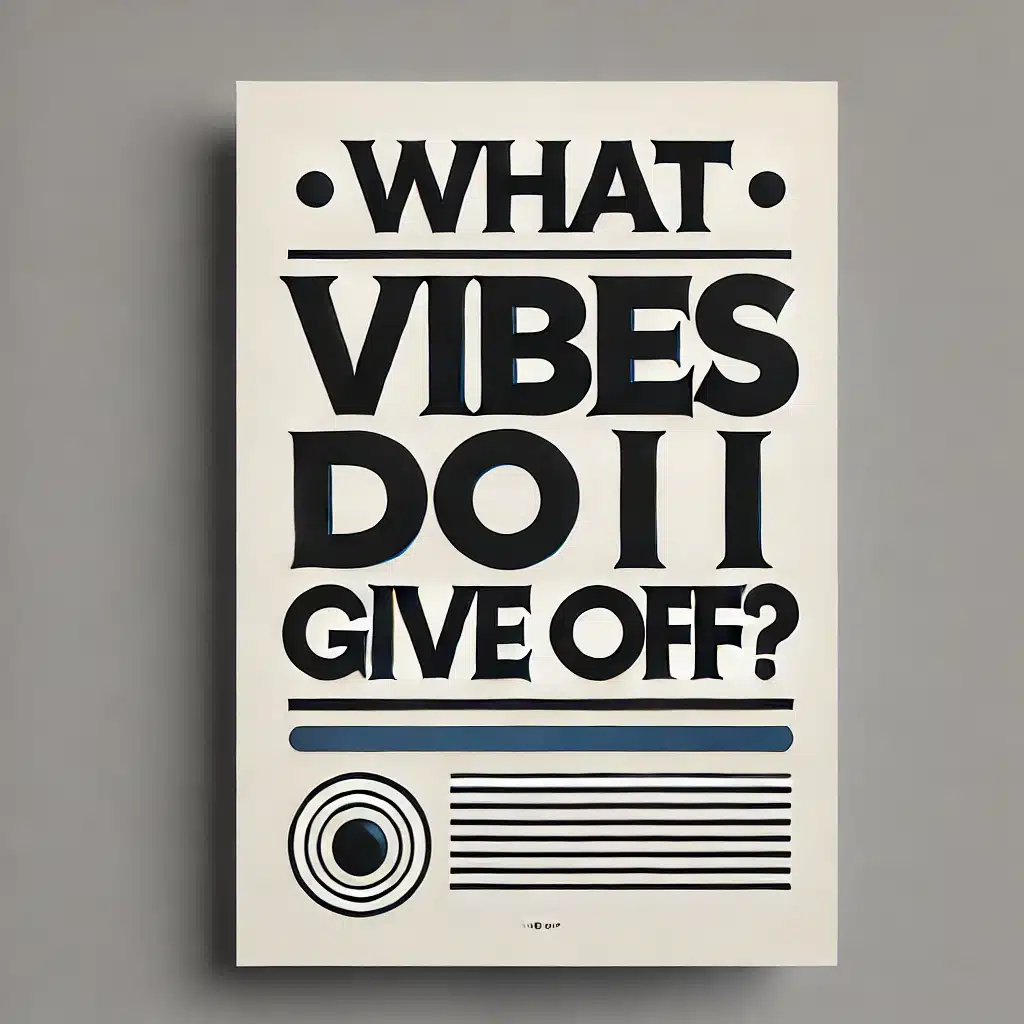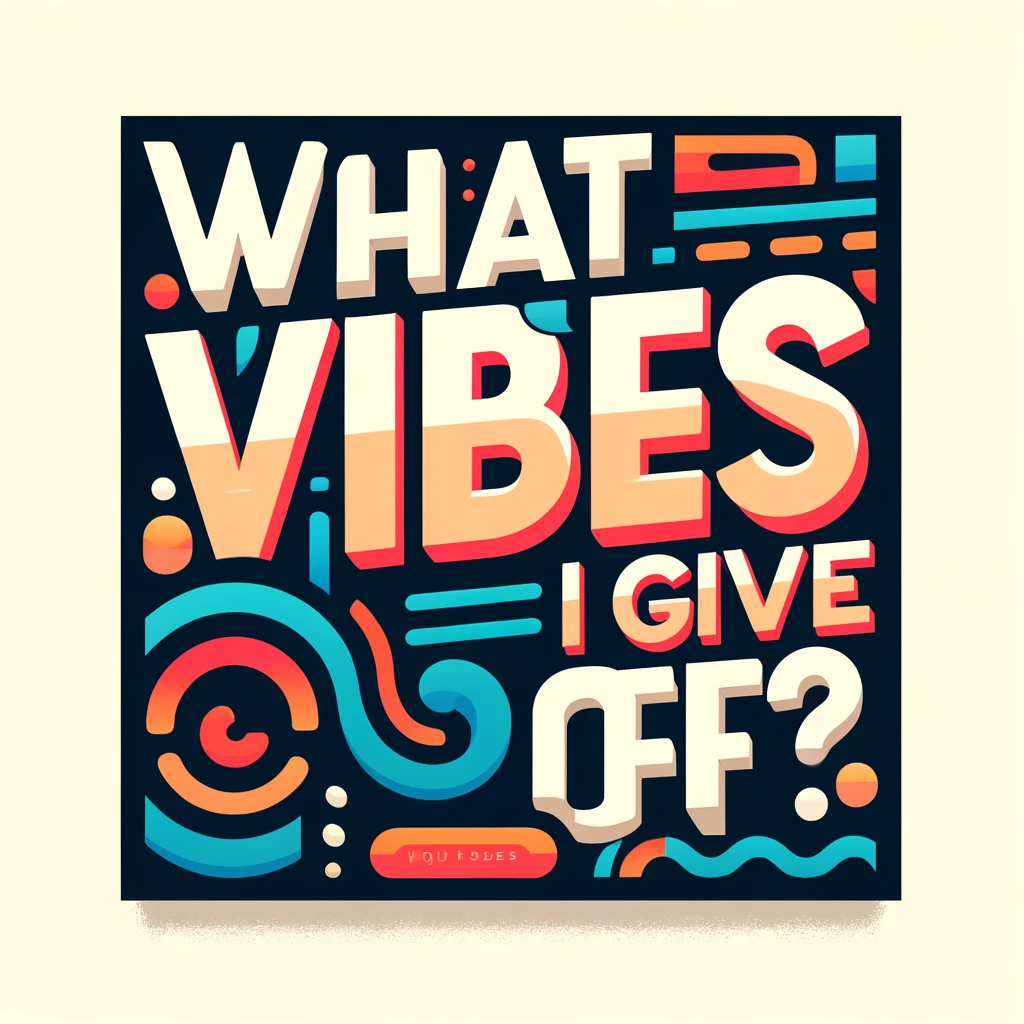Have you ever wondered why you instantly click with some people while others just don’t feel right? It’s all about the vibes we give off and pick up. Vibes are like invisible signals that come from our body language, tone of voice, and overall energy. Understanding these vibes can help us connect better with others and create positive relationships. Let’s dive into the psychology behind vibes and learn how to make our energy work for us.
Key Takeaways
- Vibes are invisible signals we send out through our body language, tone of voice, and energy.
- Understanding your own vibe can help you connect better with others and improve relationships.
- Reading other people’s vibes involves observing their body language, listening to their tone of voice, and recognizing emotional cues.
- Improving your vibe can be achieved through mindfulness, positive thinking, and adapting to different social situations.
- Matching vibes with others can enhance communication, build strong connections, and create a harmonious environment.
The Science Behind Vibes

How Our Brain Interprets Vibes
Our brains are wired to pick up on vibes. When we meet someone, our brain quickly processes their body language, tone of voice, and facial expressions. This helps us decide if they are friendly or not. It’s like our brain is a super-fast computer, making sense of all these signals in a flash.
The Role of Body Language
Body language plays a huge role in the vibes we give off. For example, crossed arms might make you seem closed off, while a smile can make you appear welcoming. Our bodies can send out positive or negative signals without us even realizing it.
Energy and Emotional Frequencies
Everything around us is energy, including our own bodies. When we feel a certain emotion, we are actually giving off a specific frequency. These frequencies can be positive or negative, and they interact with the energy fields of others. This is why you might feel good around some people and uneasy around others.
Our nervous systems can pick up on chemical signals left in a physical space. This means we can sense good or bad vibes even if we don’t know why.
Understanding the science behind vibes can help us become more aware of the energy we are putting out into the world.
Identifying Your Own Vibe
| Red | Green | Yellow | Blue |
| Stressed | Lonely | Thrilled | Tranquil |
| Anxious | Sad | Joyful | Content |
| Angry | Hopeless | Silly | Calm |
| Frustrated | Distraught | Proud | Loving |
| Irritated | Bored | Optimistic | Satisfied |
| Jittery | Carefree | Enthusiastic | Depressed |
| Guilty | Calm | Motivated | Pessimistic |
Understanding your own vibe starts with self-reflection. Take a moment to pause and tune into your thoughts and emotions. Notice the energy you are emanating. Are you radiating positivity or negativity? Are there any recurring patterns or beliefs that influence your energy? Self-assessment techniques such as journaling, meditation, and engaging in introspective practices can provide invaluable insights into your personal energy.
Self-Reflection Techniques
Self-reflection is a powerful tool for understanding your vibe. Techniques like journaling, meditation, and introspective practices can help you tune into your thoughts and emotions. Notice the energy you are emanating and ask yourself if you are radiating positivity or negativity. Look for recurring patterns or beliefs that might influence your energy.
Feedback from Others
Another way to identify your vibe is by seeking feedback from others. Ask friends, family, or colleagues about the energy they feel when they are around you. This can help align your self-perception with how others perceive you, enhancing your understanding of your unique presence. Effortless communication is often a sign that you have a really great vibe with someone.
Personality Tests and Quizzes
Personality tests and quizzes can also be useful tools for identifying your vibe. These assessments can provide insights into the subtle yet impactful ways you influence your surroundings. They can help you understand the essence you embody and how it affects those around you.
Understanding your own vibe is the key to deeper self-understanding and more effective interaction with others. When we know what energy we radiate, we can better control the impression we make on others.
How Your Vibe Affects Others
Understanding how your vibe affects others is crucial for better communication and building relationships. Your energy can greatly influence how people react to you, the emotions they feel around you, and the choices they make about interacting with you.
Impact on Personal Relationships
Your vibe can shape your personal relationships in many ways. A positive vibe can make others feel happy and comfortable, while a negative vibe might push them away. Life experiences also play a big role in shaping your vibe. Successes, failures, and significant relationships all affect how you see the world and the energy you give off.
Influence in Professional Settings
In professional settings, your vibe can be a key factor in your career. A confident and positive vibe can help you build strong connections and open up opportunities. On the other hand, a negative vibe can create barriers and limit your growth. Being aware of your vibe can help you make a better impression and improve your professional relationships.
Social Interactions and First Impressions
First impressions are often based on the vibe you give off. People quickly pick up on your energy and make judgments about you. A good vibe can lead to positive social interactions, while a bad vibe can make others feel uneasy. Even simple things like your posture, the speed of your movements, and your voice can affect how others see you.
Knowing your vibe and how it affects others can help you improve your social interactions and build better relationships. It’s not always easy, but it’s worth the effort.
Reading Other People’s Vibes
Observing Body Language
Body language can tell you a lot about how someone feels. Pay attention to facial expressions, gestures, and posture. For example, crossed arms might mean someone is feeling defensive, while a genuine smile usually shows happiness.
Listening to Tone of Voice
The way someone speaks can give you clues about their emotions. A calm, steady voice often means the person is relaxed, while a shaky or high-pitched voice might indicate nervousness or excitement.
Recognizing Emotional Cues
Emotional cues are the small signs that show how someone is feeling. These can include things like eye contact, fidgeting, or even the speed of their movements. By noticing these cues, you can better understand the energy someone is giving off.
Being aware of these signs can help you connect better with others and understand their feelings more accurately.
Improving Your Vibe
Mindfulness is about being present in the moment. It helps you become aware of your thoughts and feelings without judging them. This practice can reduce stress and improve your overall vibe. Try simple activities like deep breathing or focusing on your senses to start.
Positive thinking can transform your vibe. Replace negative thoughts with positive ones and use affirmations to boost your confidence. For example, tell yourself, “I am capable” or “I am worthy.” These small changes can make a big difference in how you feel and how others perceive you.
Being adaptable in social settings can improve your vibe. Pay attention to the energy of the room and adjust your behavior accordingly. This doesn’t mean you need to change your personality, but being flexible can help you connect better with others.
You don’t need to change your personality, you need to stop worrying about other people’s perceptions. Pursue things you enjoy, find things you are passionate about, and your vibe will naturally improve.
Different Types of Vibes
Positive Vibes
Positive vibes are the energetic mood that makes you feel happy and uplifted. They come from good thoughts, kind actions, and joyful experiences. When you are around positive vibes, you feel more relaxed and inspired. These vibes can lift your mood, inspire you, and definitely bring a smile to your face!
- Sweet
- Welcoming
- Awesome
Negative Vibes
Negative vibes are the opposite. They come from bad thoughts, unkind actions, and sad experiences. These vibes can make you feel down, stressed, or even angry. It’s like tuning into a radio station that plays only sad songs. Being around negative vibes can drain your energy and make you feel worse.
- Hostile
- Unsettling
- Gloomy
Neutral Vibes
Neutral vibes are in between positive and negative. They don’t make you feel especially good or bad. It’s like background music that you don’t really notice. These vibes are calm and steady, and they don’t change your mood much. They can be a good balance when you need to stay focused and calm.
- Relaxed
- Thoughtful
The Importance of Matching Vibes
Building Strong Connections
When your vibe matches with someone else’s, it becomes easier to build strong connections. You feel positive, fresh, and relaxed, making communication effortless. This natural flow helps in forming deeper bonds without much effort.
Enhancing Communication
Matching vibes can significantly enhance communication. When energies sync up, conversations become smoother and more meaningful. This is especially important in professional settings, where the right vibe can be a decisive factor in career building.
Creating a Harmonious Environment
A harmonious environment is often the result of matching vibes. When everyone is on the same wavelength, it creates a positive atmosphere. This can lead to better teamwork, increased productivity, and overall well-being.
Understanding your own vibe is key to deeper self-understanding and more effective interaction with others. When we know what energy we radiate, we can better control the impression we make on others.
Conclusion
Understanding the psychology of vibes can help us figure out if people are genuine and trustworthy. It’s also important to be aware of the energy we give off. By watching body language, facial expressions, and tone of voice, we can get a sense of someone’s vibe. Paying attention to these vibes can give us useful information about any situation. Lastly, if you notice someone giving off bad vibes, it’s important to take action. Remember, vibes are like radio signals; you can tune into different energies by focusing on positive or negative feelings. So, let’s be mindful of the vibes we emit and receive, and use this knowledge to build better relationships and communicate more effectively.
Frequently Asked Questions
What are vibes?
Vibes are the feelings or energy that people give off. It’s like a mood or atmosphere that you can sense from someone or something.
How do I know what vibe I give off?
You can understand your vibe by reflecting on your feelings, asking for feedback from others, or taking personality quizzes.
Why is it important to understand my vibe?
Knowing your vibe helps you understand how others see you and can improve your relationships and interactions.
Can my vibe change over time?
Yes, your vibe can change based on your mood, experiences, and the people you are around.
How can I improve my vibe?
You can improve your vibe by practicing mindfulness, thinking positively, and adapting to different social situations.
What are the different types of vibes?
There are positive vibes, negative vibes, and neutral vibes. Each type can affect how people feel around you.




